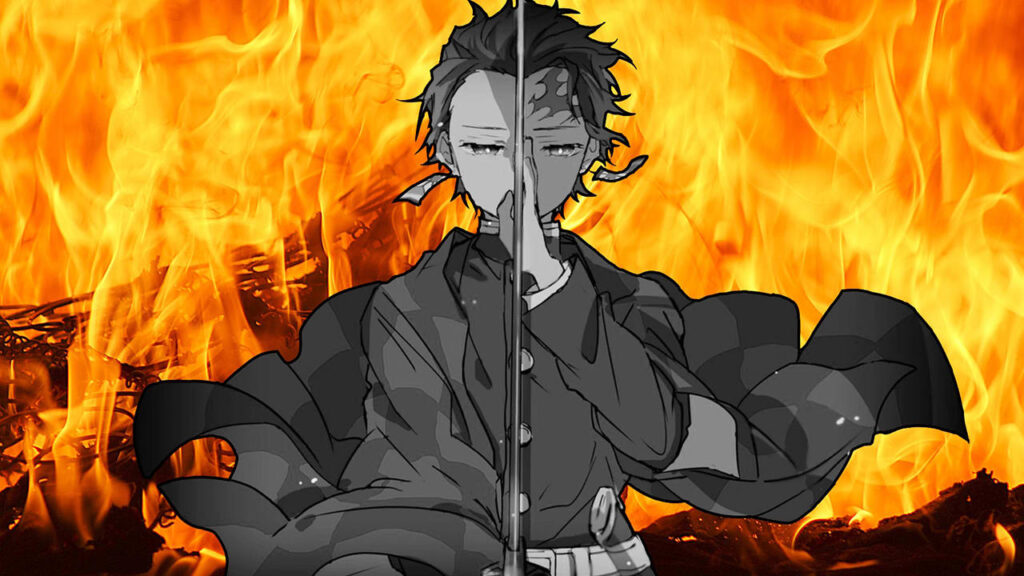As a long-time fan of anime, I’ve always been fascinated by how Japanese culture and mythology influence the storytelling. One anime that stands out in this regard is Demon Slayer: Kimetsu no Yaiba. This masterpiece weaves its gripping narrative with deep roots in Japanese myths, folklore, and historical elements. If you’ve ever wondered about the cultural inspirations behind this epic tale, you’re in for a treat!
Let me take you on a journey where we’ll uncover the myths and references that make Demon Slayer so iconic.
The Essence of Yokai and Oni in Demon Slayer

One of the central themes in Demon Slayer is the battle between humans and oni (demons). These demons are inspired by Japanese mythology, where oni are depicted as malevolent creatures often associated with destruction and chaos. In Japanese folklore, oni are typically giant, horned beings with immense strength and insatiable appetites.
In Demon Slayer, Muzan Kibutsuji, the main antagonist, embodies the essence of oni with his godlike powers and ability to create more demons. His character reflects the traditional belief that oni can corrupt and transform humans. This mythological connection deepens the lore, making the fight between Tanjiro and these demons more compelling.
Tanjiro Kamado: The Hero Archetype
Tanjiro’s character draws from the archetypal hero of Japanese folklore, a figure often portrayed as kind-hearted, determined, and morally upright. His relentless quest to save Nezuko and protect humanity reflects the Bushido code, the samurai’s moral principles emphasizing loyalty, compassion, and honor.
Interestingly, Tanjiro’s Hanafuda earrings hold cultural significance as well. They symbolize his family lineage and are reminiscent of the traditional Hanafuda card game often associated with historical Japanese culture.
Nezuko Kamado: The Demon Turned Protector
Nezuko’s transformation into a demon yet retaining her humanity mirrors stories from Japanese myths where cursed beings struggle with duality. Her bamboo muzzle serves as a visual reference to ancient practices of suppressing evil or harmful words, aligning with her journey to resist her demonic instincts.
The Twelve Kizuki and Their Mythological Parallels
The Twelve Kizuki, Muzan’s elite group of demons, are inspired by various elements of Japanese folklore and Buddhist beliefs. Each member’s unique abilities and backstories often reflect concepts like karma and reincarnation. For instance, Daki and Gyutaro’s tragic sibling bond resonates with the idea of familial karma often explored in Japanese legends.
Breath Styles and Traditional Martial Arts
One of the coolest aspects of Demon Slayer is the Breathing Techniques, used by the Demon Slayer Corps. These techniques are rooted in Japanese martial arts, where controlled breathing enhances strength and focus. The elemental themes, like water, fire, and wind, are also symbolic, drawing from Shinto beliefs that emphasize harmony with nature.
Mount Natagumo and the Spider Demon Arc
The haunting setting of Mount Natagumo and its spider demon family is a nod to Japanese ghost stories, particularly those involving tsuchigumo, mythical spider creatures known for their cunning and traps. The eerie atmosphere and the tragic history of the spider demon family evoke the yurei (ghost) and onryo (vengeful spirit) themes often found in Japanese folklore.
The Hashira: Embodiments of Samurai and Mythical Guardians
The Hashira, the elite demon slayers, resemble the Seven Samurai archetype, with each member representing unique qualities and philosophies. Their flamboyant appearances and distinct techniques are reminiscent of Japanese gods and warriors, often celebrated in myths and festivals. For example, Rengoku’s flame motif connects to Kagutsuchi, the Shinto god of fire.
The Moon, the Sun, and Their Symbolism
Throughout Demon Slayer, the sun and the moon play significant roles. The Hinokami Kagura (Dance of the Fire God) and its connection to the sun breathing technique highlight the Japanese reverence for the sun as a life-giving force. Meanwhile, the moon, often associated with mystery and power, aligns with the sinister aura of demons like Kokushibo.
Cultural Festivals and Rituals
The series often hints at traditional Japanese festivals and rituals, like the Obon Festival, a time to honor ancestors. The Demon Slayer Corps’ dedication to protecting humanity echoes these cultural practices, emphasizing respect for the spirits of the departed.
Also Read: Zin Manga – Exploring The Haven for Manga Lovers!
The Underlying Message: Light Versus Darkness
At its core, Demon Slayer represents the eternal battle between good and evil, light and darkness. This theme resonates deeply with Japanese myths, where heroes often rise against overwhelming odds to restore balance.
Why These References Matter
What makes Demon Slayer so captivating isn’t just its jaw-dropping animation or action-packed storylines—it’s how it seamlessly incorporates Japanese cultural and mythological references. These elements enrich the narrative, providing depth and meaning that resonate with fans worldwide.
FAQ’s
1. Is Demon Slayer based on real Japanese mythology?
Yes, Demon Slayer draws inspiration from Japanese folklore, especially myths about oni (demons), yokai, and samurai traditions.
2. What do Tanjiro’s Hanafuda earrings symbolize?
They represent his family’s heritage and are linked to the Sun Breathing technique, which has deep cultural ties to Japan’s reverence for the sun.
3. Are the demons in Demon Slayer inspired by real myths?
Yes, many demons, like Muzan Kibutsuji and the Twelve Kizuki, have characteristics similar to legendary oni and yokai from Japanese mythology.
4. What is the cultural significance of Breath Styles?
Breath Styles are inspired by Japanese martial arts and controlled breathing techniques, which enhance strength and focus in real combat.
5. Is Nezuko’s bamboo muzzle based on folklore?
Yes, it resembles traditional beliefs about suppressing evil words or curses, aligning with her struggle to control her demon nature.
6. Do the Hashira have mythological references?
Yes, many Hashira, like Rengoku (fire) and Giyu (water), reflect elements from Shinto gods and legendary warriors.
7. What is the inspiration behind Mount Natagumo’s spider demons?
The Spider Demons are likely based on tsuchigumo, mythical spider creatures from Japanese ghost stories.
8. How does Demon Slayer reflect the battle of good vs. evil in myths?
It mirrors the classic light vs. darkness theme found in many Japanese legends, where heroes fight to restore balance.
Conclusion: A Cultural Masterpiece
For me, Demon Slayer isn’t just an anime—it’s a cultural journey. Every character, setting, and battle is steeped in rich Japanese heritage, making it a masterpiece of storytelling. Whether you’re a casual viewer or a mythology enthusiast, there’s always something new to discover. So, the next time you watch Demon Slayer, keep an eye out for these mythological nods. It’s like finding hidden treasures in a story that never ceases to amaze.







